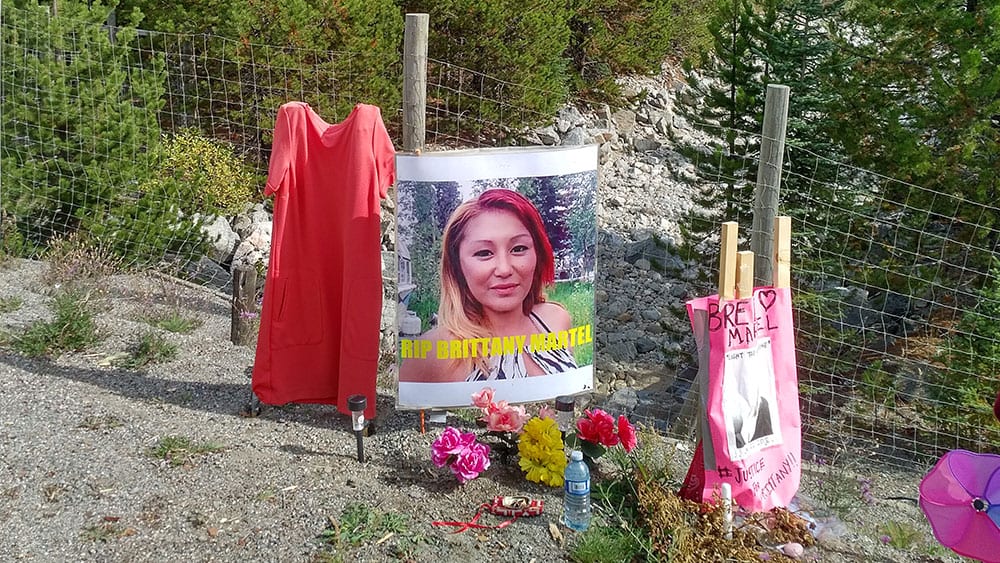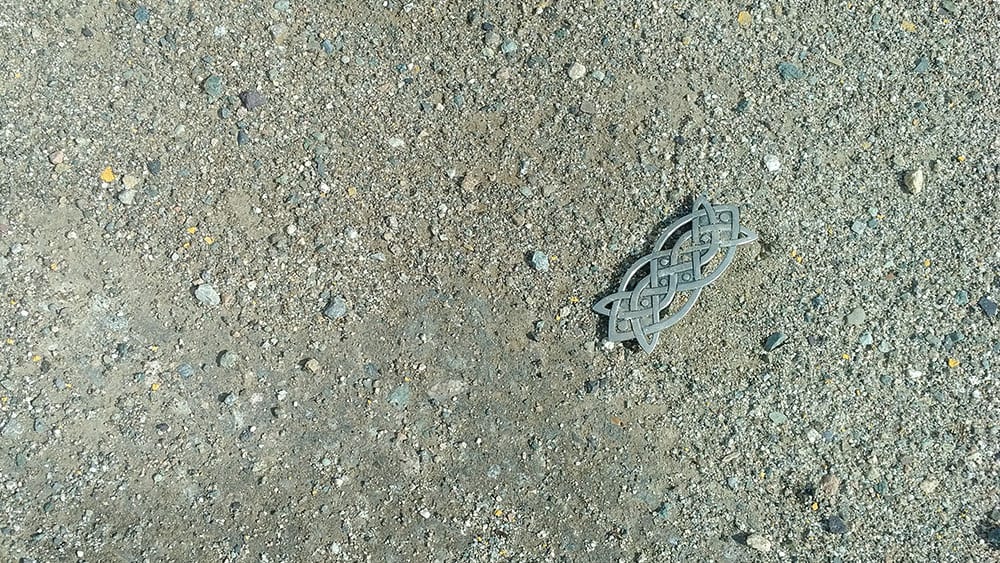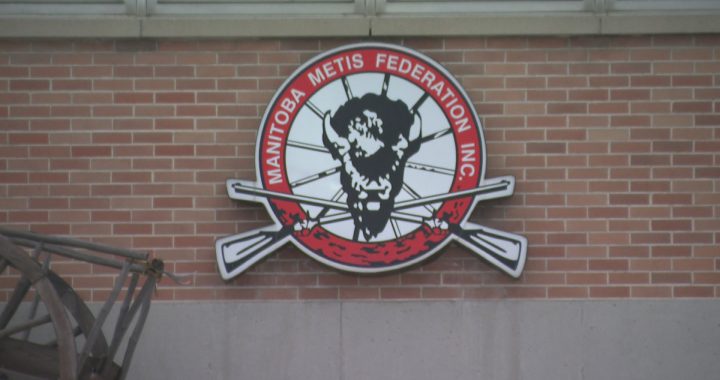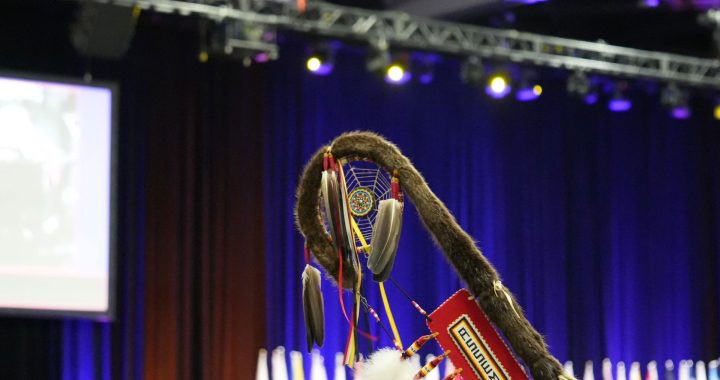
Photo Kathleen Martens

(Smudging at the site of Brittany Martel’s memorial. Photo: Kathleen Martens/APTN)
It would have been a lonely place to die.
Here on the side of a busy highway in the south-central interior of British Columbia.
Brittany Martel’s body unnoticed by thousands of commuters and semi drivers who travel the Coquihalla daily.
“I stand here and I ask myself, ‘What happened to her?’” said Roberta Moses, as she surveyed the steep embankment behind the memorial she made.
“What happened to her shoes?”
All good questions that no one can answer at this time.
RCMP are awaiting results of toxicology tests taken by the B.C. Coroners Service.
They, along with everyone else, hope to learn more because there were no visible signs of trauma on the 27-year-old’s body.
Brittany – known as Bree to her friends – could have been in the ditch near Mine Creek Forest Road for up to five days, police said.
She may have died there, alongside the highway litter, hubcaps and retreads.
Or she may been dumped there.
“It would have been her birthday September 16,” said Anna Thomas who burned sage at the memorial Wednesday.
“I feel her spirit has left this place.”
Thomas is president of the B.C. Native Women’s Association and used to manage the Royal Bank branch in Merritt.
She and association secretary Gayle Frank drove down from the Kamloops to join Moses in saying a prayer and leaving an offering of water.
“This is in the middle of nowhere,” observed Frank as she scanned the thick forest on either side of the highway.
“Someone would have driven her here. You can’t walk here.”

(A woman’s hair barrette lies on Mine Creek Forrest Road. (Photo Kathleen Martens/APTN)
It was a shock when Brittany’s body was discovered July 22.
A motorist spotted her while stretching his legs after police closed the road south of Merritt for an unrelated accident.
No one was looking for her. At least not this time.
She was the subject of a missing persons bulletin a month earlier in June 2018 after her family contacted RCMP.
But she arrived home safely July 3.
“Her cellphone wasn’t working and her dad sent her money,” said aunt Dolly Martel from Yellowknife.
Two days later Brittany headed south again with two other women.
“I miss her,” added Dolly, a sister to Brittany’s mother.
“She was more like a daughter to me than a niece.”

(The Coquihalla Highway cuts through stunning scenery. (Photo: Kathleen Martens/APTN)
115 kms to next service
Two road signs warn motorists to gas up before leaving Merritt, a town that’s a major transportation service hub in the Nicola Valley.
Otherwise they may find themselves needing to turn around where Brittany’s body was found – about 20 minutes outside Merritt.
The exit at Mine Creek Forest Road takes drivers under and around the freeway.
It’s the site of some activity: graffiti is painted on the asphalt, food wrappers blow in the breeze, and a woman’s hair barrette lies broken in two pieces.
A group of mourners found a pair of women’s panties at the scene.
Were they Brittany’s?
Dolly knows about the find two weeks after Brittany’s body was discovered and said police do, too.
She said police did recover Brittany’s shoulder bag and phone and returned them to her family.
Sometimes, she admitted, she calls the number just to hear Brittany’s voice.
“My mission is to go to the place where Brit was found,” she said.
“I made a promise at the funeral to drive that road; to find out what happened.”

(A welcome sign outside Merritt, B.C. (Photo: Kathleen Martens/APTN)
Moses didn’t know Brittany but took part in the vigil that drew an estimated 40 people.
She said the group formed in a Merritt park, marched to the front of the RCMP detachment and wound its way up a hill to the grounds of an Indigenous college.
“We left posters of Brittany outside the (detachment),” she said.
“Two hours later they were gone. That’s a show of disrespect by the RCMP.”
Moses said Brittany joins a list of unsolved deaths involving missing and murdered Indigenous women and girls in Canada.
She said nearly a dozen people revealed during the vigil they – like Brittany’s family – lost relatives under suspicious circumstances.
“My great niece was found face down in a slough in Edmonton 1999,” added Moses, tears springing from her eyes at the memory.
“She was missing a shoe and her fingernails were broken; she fought like hell.”
But there was never a criminal case.
“Take a look at this vast country,” she added.
“How many of our people – our women – are out there?”
Frank lost a younger sister in a fire outside Kamloops in 2009.
She said police labelled it “accidental” even though her sibling was inside a trailer in a bad part of town.
“She was burned alive by accident,” said Frank.
“So many women and men are unaccounted for.”

(The RCMP detachment in Merritt, B.C. (Photo: Kathleen Martens/APTN)
Together they list the names of half a dozen well-known and not so well-known cases of missing and murdered Indigenous women and girls from the Kamloops, Merritt and Hope, B.C. areas.
Communities that see heavy traffic thanks to their location on major routes and a high volume of strangers.
‘No criminality suspected’
People from Merritt to Brittany’s Dene community of K’atl’odeeche or Hay River First Nation were dismayed when police announced “no criminality is suspected” in her death.
“How is that not suspicious that she wound up in a ditch?” asked Thomas.
“Without any shoes.”
This time Brittany had a ride.
She usually got around the interior and lower mainland of B.C. by hitchhiking – a common form of transportation in the North where not everyone can afford a vehicle and there are no public buses.
Though she loved her family, home was a place she increasingly escaped.
“I feel like road kill haha on this highway again,” she wrote July 15.
The next post is a photo her sister snapped only days before her final journey. Her hair is shades of red and blonde – as if she likes both colours equally.
It’s the picture Moses laminated to use at the memorial – a small island to Brittany’s death amid the stunning scenery.
“I don’t think there will ever be closure until we find out exactly what happened,” Moses said.
“How did she end up dead on the side of a major highway? What did she experience in her final hour?
“I pray for justice to be done one day soon.”
Dolly hopes her niece didn’t suffer.
She said Brittany’s boyfriend from Edmonton was a long-time drug user and got the young woman “into heavy stuff.”
He owed money and fled violence in NWT, Dolly said, and Brittany went after him.
“She was a happy-go-lucky party girl. Not into the junkie lifestyle he showed her.”
The women she travelled with on that last ride were also involved with drugs, Dolly said.
“The police questioned (the driver) for three hours…She dropped the other passenger off in Brooks, Alta., and kept going with Brittany.
“She said they drove all night but were so tired (they) pulled over to the side of the road…where she’d fallen asleep.

(A view of the Coquihalla Highway from Mine Creek Forest Road. Photo: Kathleen Martens/APTN)
Dolly starts crying now.
“When she woke up she said that Bree was gone. That she drove back and forth looking for Brittany.
“But didn’t go to police.”
Holly said drugs – and those women – have hurt a lot of people.
And those women haven’t been back to NWT.
“They called each other ‘friends’,” said Dolly. “There have been condolences, no answers.”
This is the longest Dolly has gone without speaking to Brittany, who is buried next to her stillborn son.
A loss Dolly said her niece hadn’t recovered from.
She said Brittany was a natural mom, the oldest looking after five siblings while her parents struggled with alcohol addiction.
“They looked up to her. She bathed and fed them. They are lost without her.”
Dolly herself kicked cocaine “cold turkey” – something she said Brittany admired.
“She told me, ‘Auntie, I want a better life.’”
Yet she became another crime statistic.
Collateral damage in the drug trade.
And a checkmark in the grievances Moses said Indigenous people count living under non-Indigenous police and courts.
“There is mistrust of the RCMP,” she said.
During a lull in traffic noise, Moses said coming to the memorial doesn’t bring her peace.
Instead she puzzles over the dashcam video obtained by APTN that shows Brittany wandering about three kilometres near where she was eventually found dead.
“She’s wearing shoes in the video,” said Frank.
Police have studied more dashcam video and interviewed more people. But not the boyfriend, said Dolly.
She’s in touch with police regularly, she added, and prays they keep investigating.
“Someone has to have seen something or knows something,” she said.
“I don’t want her death to be swept under the rug.”
Merritt RCMP can be reached by calling 1-250-378-4262.










